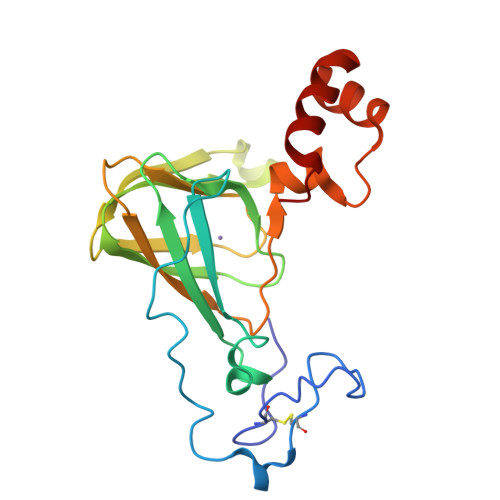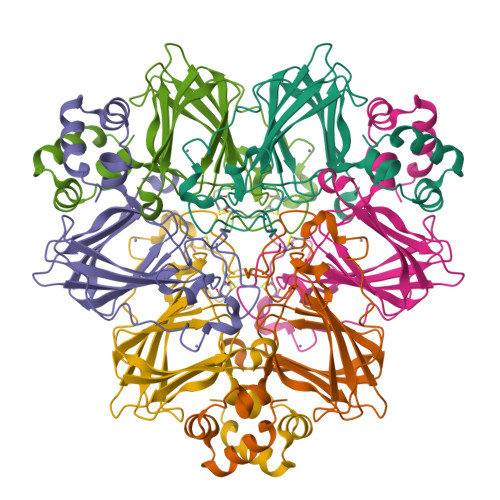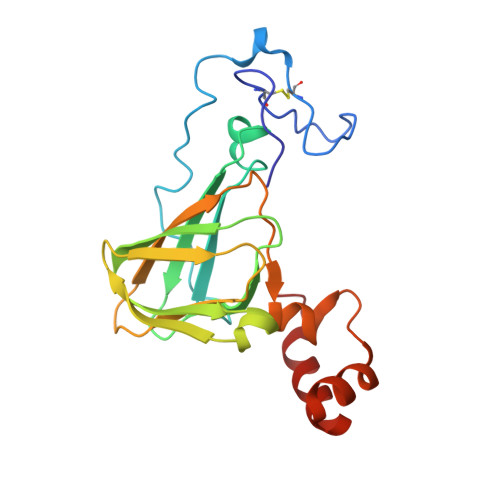Structural and spectroscopic studies shed light on the mechanism of oxalate oxidase
Opaleye, O., Rose, R.-S., Whittaker, M.M., Woo, E.-J., Whittaker, J.W., Pickersgill, R.W.(2006) J Biological Chem 281: 6428-6433
- PubMed: 16291738
- DOI: https://doi.org/10.1074/jbc.M510256200
- Primary Citation of Related Structures:
2ET1, 2ET7, 2ETE - PubMed Abstract:
Oxalate oxidase (EC 1.2.3.4) catalyzes the conversion of oxalate and dioxygen to hydrogen peroxide and carbon dioxide. In this study, glycolate was used as a structural analogue of oxalate to investigate substrate binding in the crystalline enzyme. The observed monodentate binding of glycolate to the active site manganese ion of oxalate oxidase is consistent with a mechanism involving C-C bond cleavage driven by superoxide anion attack on a monodentate coordinated substrate. In this mechanism, the metal serves two functions: to organize the substrates (oxalate and dioxygen) and to transiently reduce dioxygen. The observed structure further implies important roles for specific active site residues (two asparagines and one glutamine) in correctly orientating the substrates and reaction intermediates for catalysis. Combined spectroscopic, biochemical, and structural analyses of mutants confirms the importance of the asparagine residues in organizing a functional active site complex.
Organizational Affiliation:
School of Biological and Chemical Sciences, Queen Mary, University of London, Mile End Road, London E1 4NS, United Kingdom.

















